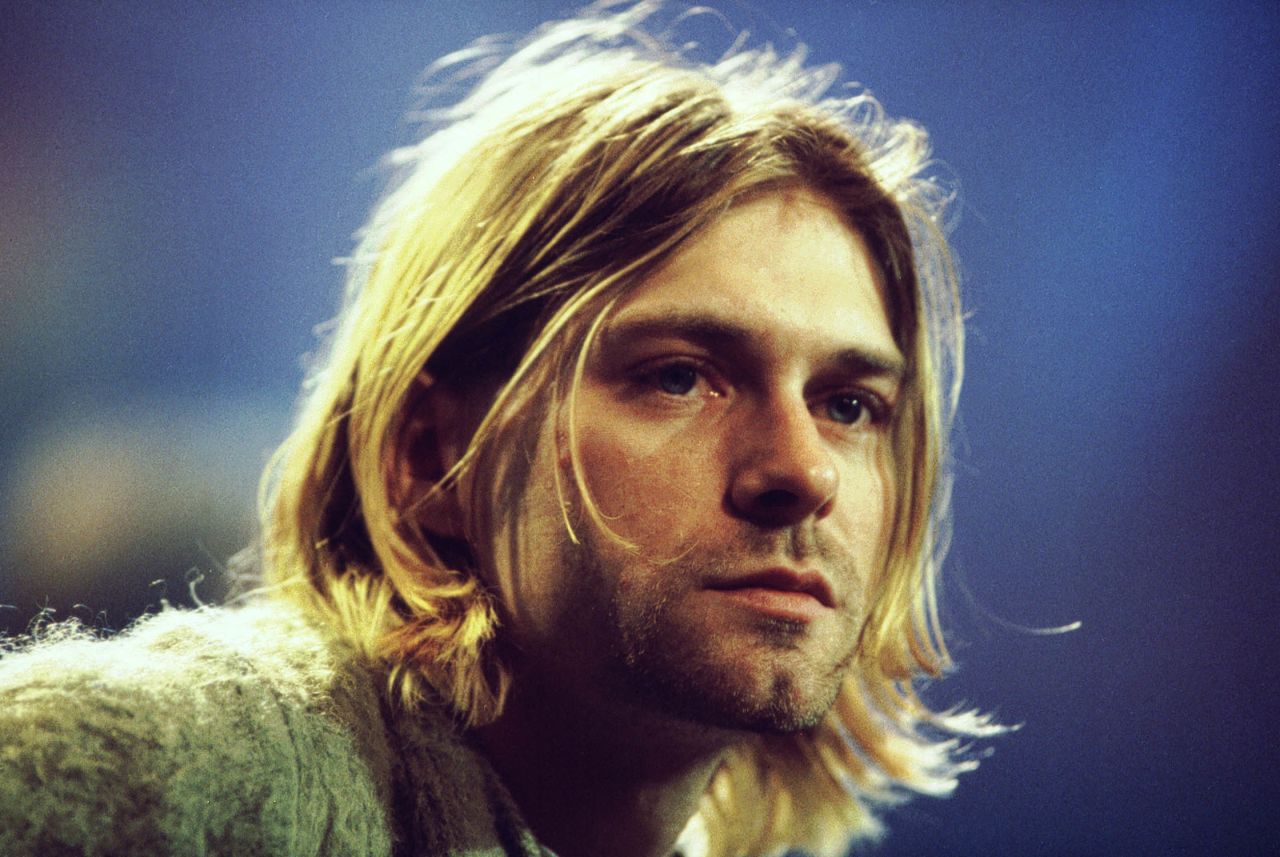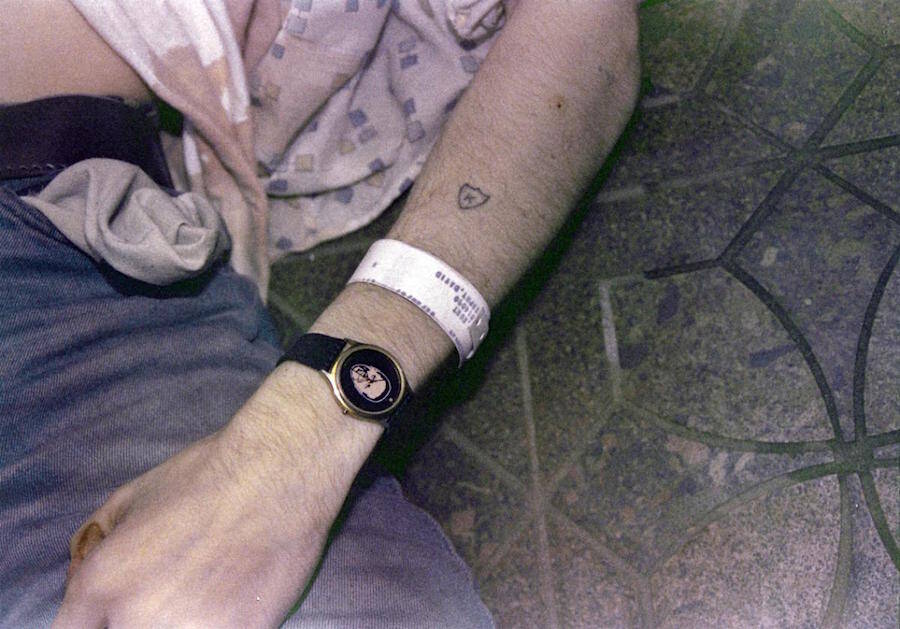Let me tell you something, folks—Kurt Cobain isn’t just a name; he’s an era, a movement, and a symbol of rebellion. But behind the grunge legend lies a story that’s as raw and real as it gets. The world remembers him for his music, but the shadow of heroin looms large over his life. If you’ve ever wondered about Kurt Cobain’s battle with heroin, this article dives deep into the truth, the pain, and the legacy he left behind.
There’s no sugarcoating here. We’re talking about one of the most iconic figures in rock history, a man who changed the face of music forever. But let’s not forget, he was also human, flawed, and struggling. This article isn’t just about the facts—it’s about understanding the man behind the music, the struggles that shaped him, and how heroin became part of his tragic journey.
Now, before we get into the nitty-gritty, let’s set the stage. Kurt Cobain wasn’t just some guy with a guitar; he was a genius who brought authenticity to the forefront of the music industry. But his genius came at a cost, and heroin played a significant role in his downfall. So buckle up, because we’re about to explore a side of Kurt Cobain that’s as compelling as it is heartbreaking.
Read also:Iribitari Gal Live Action Exploring The Adaptation Of A Beloved Manga
Biography: Who Was Kurt Cobain?
Before we dive into the heroin chapter, let’s talk about the man himself. Kurt Donald Cobain was born on February 20, 1967, in Aberdeen, Washington. From a young age, he showed a passion for art and music, but life wasn’t easy for him. His parents divorced when he was nine, and this event left a deep mark on his psyche. As he grew older, his love for music only intensified, leading to the formation of Nirvana, a band that would change the world forever.
Here’s a quick breakdown of his life:
| Full Name | Kurt Donald Cobain |
|---|---|
| Date of Birth | February 20, 1967 |
| Place of Birth | Aberdeen, Washington, USA |
| Band | Nirvana |
| Genre | Grunge, Alternative Rock |
| Notable Albums | Nevermind, In Utero, Bleach |
The Rise of Nirvana: Fame and Fallout
Nirvana exploded onto the scene in the early '90s with their album Nevermind, which featured the iconic hit "Smells Like Teen Spirit." Suddenly, Kurt Cobain was thrust into the spotlight, and the world was at his feet. But fame isn’t always a blessing, and for Cobain, it came with a heavy price tag. The pressure to constantly produce, the scrutiny, and the expectations began to weigh on him heavily.
And let’s not forget, Kurt wasn’t just dealing with fame. He was also battling chronic pain, stemming from a stomach condition that plagued him for years. This pain, combined with the stress of being a global icon, led him down a dangerous path—one that would ultimately involve heroin.
How Did Kurt Cobain Get Involved with Heroin?
Now, here’s the million-dollar question: how did Kurt Cobain end up using heroin? The answer lies in a combination of factors. First, there’s the chronic pain I mentioned earlier. Cobain was prescribed painkillers to manage his stomach issues, but over time, he developed a tolerance and began seeking stronger substances. Enter heroin.
Heroin offered him a temporary escape from the pain and the chaos of his life. But as we all know, heroin isn’t just a quick fix—it’s a slippery slope. Once he started, it was hard to stop. The drug became a crutch, something he leaned on to cope with the pressures of fame and the emotional turmoil he faced.
Read also:Bellebrooksxo Onlyfans Leak What You Need To Know
The Role of Chronic Pain
Let’s break this down a bit more. Chronic pain isn’t just physical—it’s mental and emotional too. For Kurt, the pain wasn’t just about his stomach; it was about the weight of the world on his shoulders. Heroin provided a sense of relief, but at what cost? The more he used, the more dependent he became, and the cycle spiraled out of control.
The Impact of Heroin on Kurt Cobain’s Life
Heroin didn’t just affect Kurt’s personal life—it seeped into every aspect of his existence. His relationships suffered, his music was impacted, and his health deteriorated rapidly. Let’s take a closer look at how heroin changed his world.
- Relationships: Kurt’s marriage to Courtney Love was tumultuous, and heroin played a significant role in their ups and downs. Their relationship was often in the spotlight, and the media didn’t hesitate to sensationalize their struggles.
- Music: Despite the chaos, Kurt managed to produce some of his best work during this period. But the toll heroin took on his creativity and mental health was undeniable.
- Health: Heroin wreaked havoc on Kurt’s body. He became emaciated, frail, and visibly unwell. The drug consumed him, both physically and mentally.
Heroin’s Effect on His Mental Health
Mental health was already a challenge for Kurt. He struggled with depression, anxiety, and a deep sense of alienation. Heroin exacerbated these issues, leading to darker thoughts and a growing sense of despair. It’s a cruel irony—what he thought would help him escape only trapped him further.
Kurt Cobain’s Struggles with Addiction
Let’s be real here—addiction is a beast. It doesn’t discriminate, and it doesn’t care who you are. Kurt Cobain’s struggles with heroin were a stark reminder of this. Despite his fame, wealth, and access to resources, he couldn’t break free from the grip of addiction. But why?
Part of it was the stigma surrounding addiction. In the '90s, there wasn’t the same level of understanding or support that exists today. People didn’t talk about addiction openly, and those who did often faced judgment and criticism. For Kurt, the fear of being judged may have kept him from seeking help.
The Role of Enablers
Another factor to consider is the role of enablers. In Kurt’s case, the people around him may not have done enough to help him overcome his addiction. Whether it was a lack of awareness or a failure to intervene, the support system that should have been there for him fell short.
Rehab and Recovery Attempts
Kurt did make attempts to get clean. He entered rehab multiple times, but the pull of heroin was too strong. Each time he tried to quit, the withdrawal symptoms and cravings were overwhelming. It’s a testament to the power of addiction—once it takes hold, it’s incredibly difficult to break free.
But let’s not forget, rehab isn’t a one-size-fits-all solution. What works for one person might not work for another. For Kurt, the environment and circumstances surrounding his attempts may not have been conducive to recovery. It’s a complex issue, and there’s no easy answer.
The Final Attempt
Tragically, Kurt’s final attempt at rehab ended in disaster. He left the facility, and just days later, he was found dead in his home. The world was left reeling, and his fans were heartbroken. It was a devastating end to a life that had so much more to offer.
Kurt Cobain’s Legacy: Beyond Heroin
Despite the darkness that surrounded his final years, Kurt Cobain’s legacy is one of hope, authenticity, and rebellion. His music continues to inspire millions, and his influence on the music industry is undeniable. But we can’t ignore the lessons his story teaches us about addiction and mental health.
Kurt’s battle with heroin is a reminder that no one is immune to the struggles of life. It’s a call to action for us to be more compassionate, more understanding, and more supportive of those who are fighting their own battles.
What Can We Learn?
- Empathy: We need to approach addiction with empathy, not judgment. People who struggle with addiction are not weak—they’re human.
- Support: Building a strong support system is crucial for recovery. Whether it’s family, friends, or professionals, having people to lean on can make all the difference.
- Education: Educating ourselves and others about addiction is key to breaking down the stigma and creating a more supportive environment.
Conclusion: Remembering Kurt Cobain
In conclusion, Kurt Cobain’s story is one of triumph and tragedy. He changed the world with his music, but his battle with heroin left an indelible mark on his life and legacy. As we reflect on his journey, let’s remember the lessons he taught us about resilience, authenticity, and the importance of mental health.
So, what can you do? Share this article, start a conversation, and let’s work together to create a world where people struggling with addiction feel supported and understood. Kurt Cobain’s story doesn’t have to end in tragedy—it can be a catalyst for change.
Table of Contents
- Biography: Who Was Kurt Cobain?
- The Rise of Nirvana: Fame and Fallout
- How Did Kurt Cobain Get Involved with Heroin?
- The Impact of Heroin on Kurt Cobain’s Life
- Kurt Cobain’s Struggles with Addiction
- Rehab and Recovery Attempts
- Kurt Cobain’s Legacy: Beyond Heroin
And there you have it, folks. Kurt Cobain’s story is a powerful reminder of the highs and lows of life. Let’s honor his memory by learning from his experiences and striving to make the world a better place for those who are still fighting their battles.


